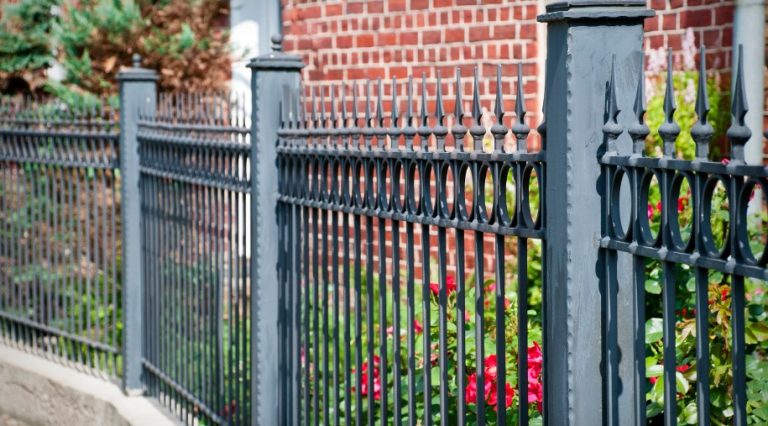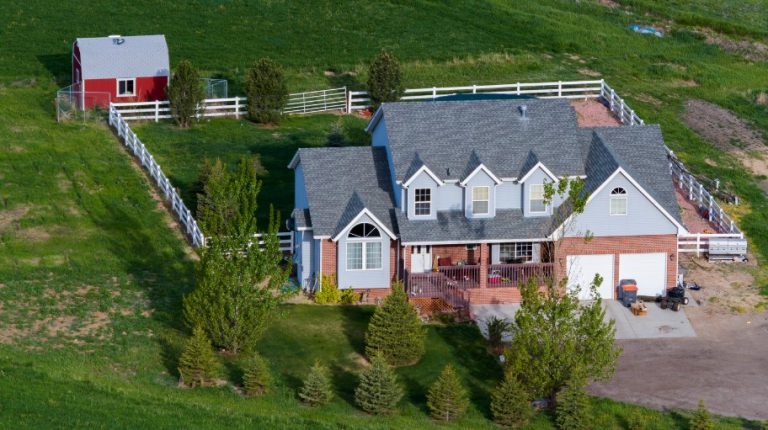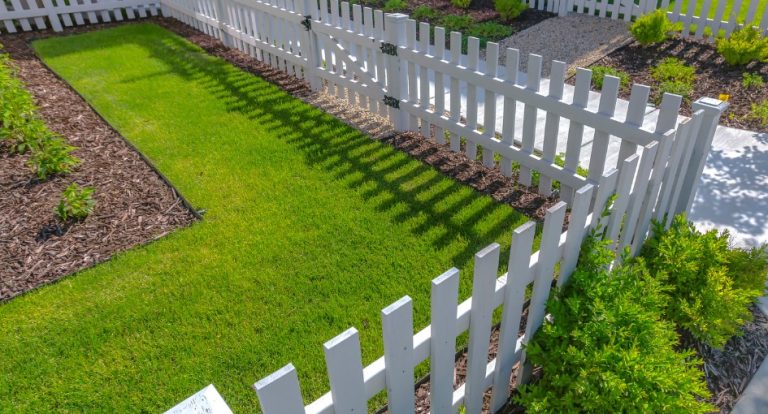Building a garden shed in the UK can be a straightforward process, but it’s crucial to understand the legal framework surrounding it to avoid complications. Many homeowners assume they can erect any structure in their garden, but specific rules govern the size, location, and even the purpose of the shed.
These regulations, which fall under permitted development rights, help ensure that any outbuilding doesn’t negatively impact the surrounding environment or properties.
In this blog, I will explore what is the maximum size shed without planning permission UK. I’ll cover the size and height restrictions, the impact of your property’s location, and the potential need for planning permission based on the intended use of your shed.
This guide will help you navigate UK shed regulations confidently, ensuring you remain compliant with the law while adding a functional space to your garden.
What Are the UK Planning Permission Rules for Garden Sheds?
In the UK, garden sheds, garages, and other outbuildings are typically covered under permitted development rights. This means that, in most cases, you do not need to apply for planning permission as long as your shed meets certain criteria.
Permitted development rights were introduced to simplify the process for homeowners making minor changes to their properties, so long as those changes don’t cause significant impacts on neighbours or the surrounding area.
Permitted development is particularly beneficial for smaller garden structures, but it’s important to understand that these rights come with strict limitations. Here’s a breakdown of the rules that apply to garden sheds under permitted development:
- The shed must not cover more than 50% of the land surrounding the house.
- The shed must not be placed in front of the principal elevation (usually the front of your house).
- The shed must not exceed specific height restrictions, which I’ll elaborate on below.
If your shed doesn’t meet these conditions, you’ll likely need to apply for planning permission through your local planning authority. This process involves submitting a detailed application, including plans and specifications, and waiting for approval. Failing to do this when required can result in fines or being ordered to remove the structure.
What Is the Maximum Shed Size Without Planning Permission in the UK?
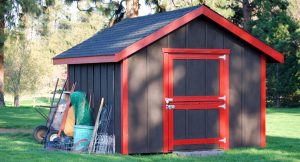
The size of the shed is perhaps the most crucial aspect when determining whether or not you need planning permission. Under permitted development rights, sheds are subject to strict size limits designed to prevent oversized structures from dominating the landscape or impeding on a neighbour’s enjoyment of their own garden.
Size Limitations
1. Footprint: The shed, combined with all other outbuildings, must not exceed 50% of the total area of your garden. This includes greenhouses, summerhouses, and other outdoor structures. Essentially, your shed must be proportional to the size of your garden. For larger properties, this is rarely an issue, but homeowners with smaller gardens need to be careful about how much space their shed will occupy.
2. Height: The height of your shed is another key factor:
- If your shed has a dual-pitched roof (i.e., a traditional triangular roof), it can be up to 4 metres tall.
- For all other roof types, such as flat roofs or mono-pitched roofs, the maximum height is 3 metres.
- However, if your shed is located within 2 metres of the boundary of your property, its maximum height cannot exceed 2.5 metres, regardless of the roof type.
3. Eaves Height: The maximum height of the shed’s eaves (the lower edges of the roof that overhang the walls) is 2.5 metres. This restriction ensures that even larger sheds remain unobtrusive from the neighbour’s view.
Placement Restrictions
In addition to size limitations, there are also rules about where you can place your shed on your property. For example:
- Sheds cannot be placed forward of the principal elevation of your house. This means your shed must be located behind your home or in a side garden.
- The shed should not be positioned too close to your boundary unless it adheres to the lower height restrictions (2.5 metres or less).
Does the Shed’s Purpose Affect Planning Permission?
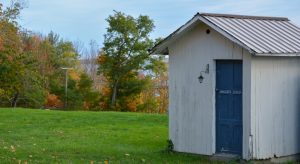
The intended use of your shed can also determine whether or not you need planning permission. While most homeowners use their sheds for storing tools, gardening equipment, or bicycles, others may want to use them for different purposes, which can affect planning requirements.
Residential Storage vs. Business Use
1. Residential Use: If you’re simply using your shed for storage or as a hobby space, this typically falls under permitted development, provided the shed meets the size and height restrictions. For example, if you plan to store garden tools, bikes, or seasonal items in the shed, you won’t usually require planning permission.
2. Home Office: Many people now use garden sheds as home offices, especially with the rise in remote working. If your shed will be used as a workspace, it might still fall under permitted development, as long as it’s a small-scale, personal office space and doesn’t involve significant modifications or external alterations.
3. Business Use: However, if you intend to use the shed as a place of business, particularly if clients or customers will visit, you’ll almost certainly need to apply for planning permission. Operating a business from a shed, such as a beauty salon or workshop, could increase foot traffic, noise, and parking needs, which could impact your neighbours and the surrounding area.
What Are the Other Factors to Consider When Building a Shed?

Beyond size and intended use, other considerations could affect whether you need planning permission:
Property Location
1. Conservation Areas: If your home is located within a conservation area, there are stricter controls in place to preserve the historic or aesthetic character of the neighbourhood. Even minor developments like sheds may require planning permission, regardless of their size.
2. Listed Buildings: If your home is a listed building, you’ll need planning permission to build any outbuilding, including a shed, as these properties are subject to much stricter controls. Listed buildings are protected by law due to their historical or architectural significance, and any alterations, even in the garden, must be approved by the local authority.
3. Type of Property: If you live in a flat or maisonette, you do not have the same permitted development rights as a homeowner in a detached or semi-detached house. For flats, any outbuilding will likely require planning permission, as there’s no private garden to consider under permitted development.
Proximity to Boundaries
If you’re planning to build a shed close to the boundary of your property, you’ll need to be especially cautious about height restrictions. If the shed is less than 2 metres from the boundary, it must not exceed 2.5 metres in height. This is to prevent overshadowing or causing disputes with your neighbours.
When Do You Need to Apply for Planning Permission?
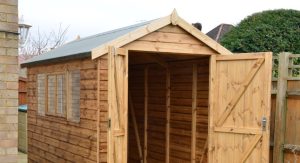
There are several scenarios where you might need to apply for planning permission, even if your shed meets most of the permitted development criteria:
1. Oversized Sheds: If your shed exceeds the height limits (over 4 metres for dual-pitched roofs or over 3 metres for flat roofs) or covers more than 50% of your garden, you’ll need to seek planning permission.
2. Sheds Used for Business: As mentioned earlier, running a business from a shed often requires planning permission, especially if it involves customers visiting your property.
3. Sheds in Restricted Areas: If your property is located in a restricted area such as a national park, Area of Outstanding Natural Beauty (AONB), or World Heritage Site, additional restrictions apply, and you may need permission for any outbuilding, regardless of size.
If you do need planning permission, the process is straightforward. You’ll need to submit an application to your local planning authority, including plans, dimensions, and other relevant information about the shed. The decision usually takes about 8 weeks, so it’s best to plan ahead to avoid delays.
How to Ensure Your Shed is Compliant with UK Laws?
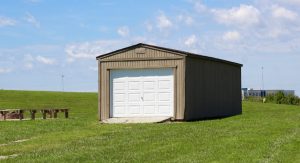
Ensuring your shed complies with UK law is relatively simple if you follow a few basic steps. Here’s a compliance checklist to help:
- Measure the footprint to confirm that the shed will cover no more than 50% of your garden.
- Check the height against the restrictions for your specific type of shed roof.
- Verify the distance from the boundary to ensure it stays within legal limits.
- Review your local council’s rules if your property is in a conservation area or is a listed building.
If you’re unsure whether your shed falls within permitted development rights, it’s always worth contacting your local planning authority for guidance.
Shed Size Guidelines Table
| Feature | Permitted Size Limits UK |
| Maximum Area | No more than 50% of the garden |
| Maximum Height (dual-pitch) | 4 metres |
| Maximum Height (other roofs) | 3 metres |
| Maximum Eaves Height | 2.5 metres |
| Distance to Boundaries | At least 2 metres for structures above 2.5m |
Conclusion
Building a shed without the need for planning permission is possible as long as you adhere to the UK’s permitted development rights. By staying within the size and height limits, placing the shed appropriately, and considering the intended use, you can avoid the hassle of planning permission and enjoy your new garden structure worry-free. When in doubt, it’s always a good idea to consult your local planning authority to ensure compliance and avoid potential penalties.
What Are the FAQs About Garden Shed Planning Permission in the UK?
What size shed can I have without planning permission?
In the UK, you can build a shed without planning permission if it’s under 4 metres in height for a dual-pitched roof, 3 metres for other roofs, and if it covers less than 50% of your garden space.
Does shed height include the roof?
Yes, the overall height includes the roof, measured from the base of the shed to the top of the highest point of the roof.
Can I build a shed on the side of my house?
No, under permitted development rules, outbuildings cannot be placed in front of or to the side of the principal elevation of your house. They must be located in the rear garden.
Is planning permission required for a shed with electricity?
While adding electricity to a shed doesn’t necessarily require planning permission, the electrical work must comply with building regulations.
How close can a shed be to my neighbour’s fence?
If your shed is within 2 metres of your neighbour’s boundary, its height must not exceed 2.5 metres.
Do I need planning permission for a large summerhouse?
If your summerhouse exceeds the permitted height or covers more than 50% of your garden, planning permission will be required.
What happens if I build a shed without the necessary permission?
You could face fines, enforcement action, or be required to dismantle the shed. Applying for retrospective planning permission is possible, but approval is not guaranteed.


